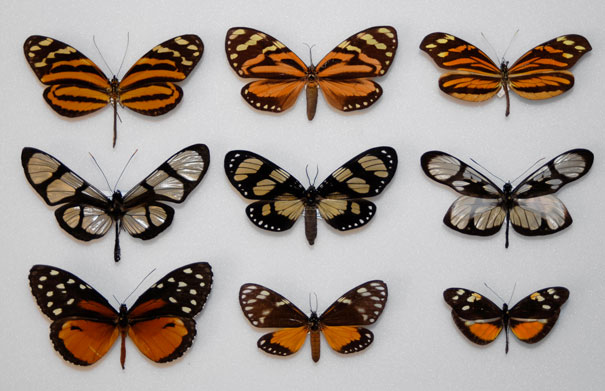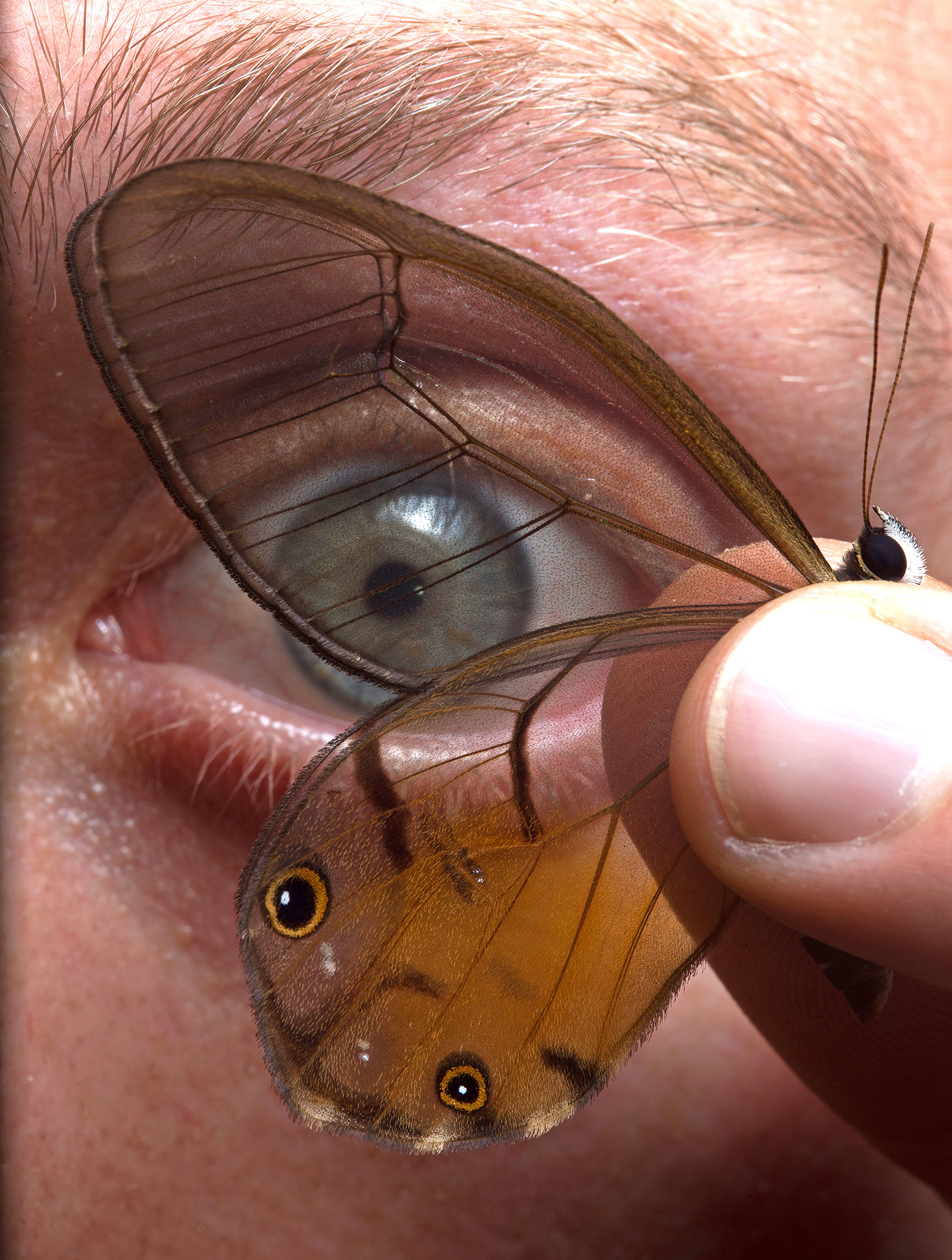Like invisibility in legends, transparency in nature is a powerful tool. Most transparent animals live in the ocean, where a close visual match with the water renders them almost invisible to predators.
On land, transparency is rare and difficult to achieve, but some butterflies and moths (Lepidoptera) do have transparent wings. And a new study indicates transparency can serve not only to camouflage them, but in other cases to signal and warn predators, “Don’t eat me! I’m toxic.”

Mimicry for Self-Defense
The group’s latest paper adds a unique perspective on Lepidoptera self-defense. In some species, vivid wing coloration indicates the presence of chemical defenses that make the butterfly unpalatable or toxic, and predators learn to avoid them. Accordingly, palatable species can evolve to mimic the toxic ones, so predators leave them alone, too. In addition, multiple unpalatable species may converge in their warning colorations, thereby sharing in the benefits of the warning coloration process. Large “mimicry rings” can even form containing both toxic and nontoxic species, all displaying strikingly similar patterns and color combinations.


